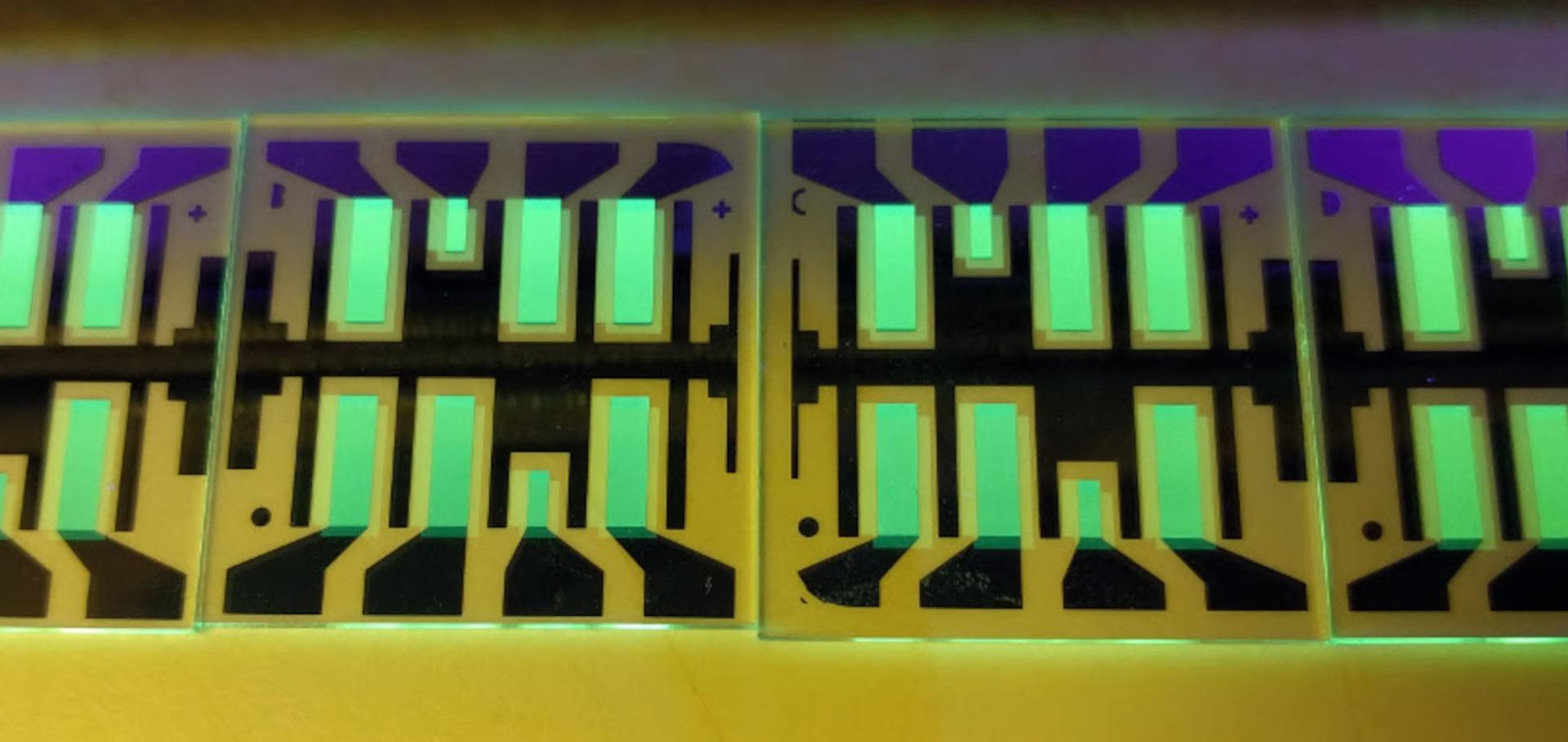Photoelectron spectroscopy investigations of recombination contacts for tandem organic solar cells
Applied Physics Letters 100:11 (2012)
Abstract:
Recombination contacts play an important role in highly efficient organic tandem solar cells. We present a photoelectron spectroscopy study on contact systems that have previously been shown to work efficiently as recombination contacts. Here, the conversion of an electron current into a hole current is realized either by insertion of gold clusters or by a highly doped pn-junction. From the measured energy level alignments, we show that the working principles of these two approaches are significantly different. For gold clusters, the recombination current is promoted by an accumulation of charge carriers, while for doped pn-junctions, it is achieved by tunneling through a depletion layer. © 2012 American Institute of Physics.2-(2-Methoxyphenyl)-1,3-dimethyl-1H-benzoimidazol-3-ium iodide as a new air-stable n-type dopant for vacuum-processed organic semiconductor thin films.
J Am Chem Soc 134:9 (2012) 3999-4002
Abstract:
2-(2-Methoxyphenyl)-1,3-dimethyl-1H-benzoimidazol-3-ium iodide (o-MeO-DMBI-I) was synthesized and employed as a strong n-type dopant for fullerene C(60), a well-known n-channel semiconductor. The coevaporated thin films showed a maximum conductivity of 5.5 S/cm at a doping concentration of 8.0 wt% (14 mol%), which is the highest value reported to date for molecular n-type conductors. o-MeO-DMBI-I can be stored and handled in air for extended periods without degradation and is thus promising for various organic electronic devices.Erratum: Highly efficient semitransparent tandem organic solar cells with complementary absorber materials (Applied Physics Letters (2011) 99 (043301))
Applied Physics Letters 100:9 (2012)
In-situ conductivity and Seebeck measurements of highly efficient n-dopants in fullerene C60
Applied Physics Letters 100:9 (2012)
Abstract:
We present two organic dimetal complexes Cr2(hpp)4 and W2(hpp)4 as n-dopants investigated in the model system of fullerene C60 for the application in organic electronic devices. Conductivity and Seebeck measurements on doped layers are carried out in vacuum at different doping concentrations and various substrate temperatures to compare the two dopants. Very high conductivities of up to 4 S/cm are achieved for both organic dopants. The thermal activation energy of the conductivity as well as the measured Seebeck coefficient are found to decrease with increasing doping concentration, indicating a shift of the Fermi level towards the electron transport level of the n-doped C60. © 2012 American Institute of Physics.Interrelation between crystal packing and small-molecule organic solar cell performance.
Adv Mater 24:5 (2012) 675-680


